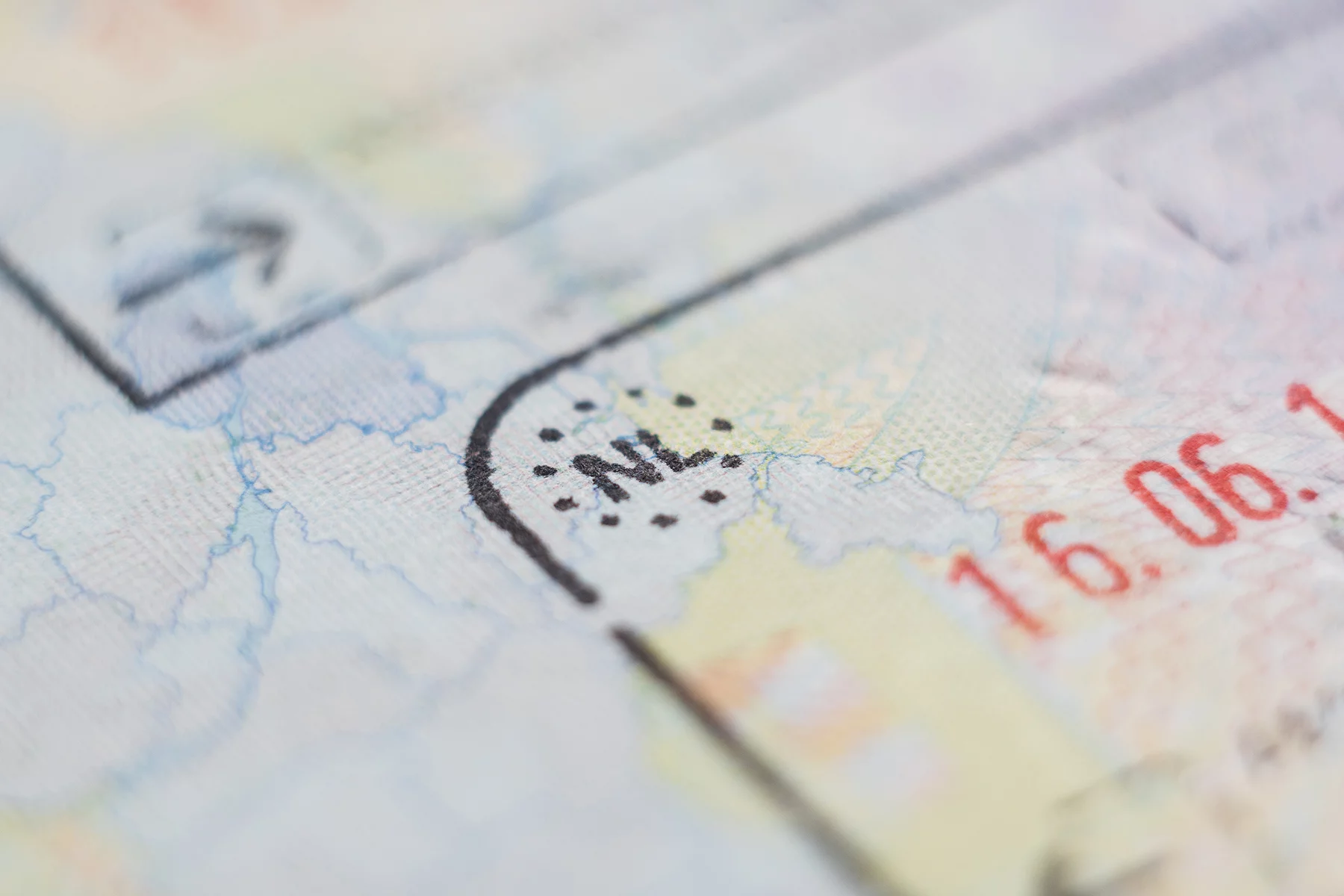Taking care of a pet can be one of the most enriching experiences in life. However, it also comes with a great deal of responsibility. And if you happen to live abroad, you face the added challenge of learning a different set of rules on how to care for your little companion.
However, fortunately for pet owners in the Netherlands, these rules are clear and simple. And to help you navigate them, this article outlines everything you need to know about keeping your pets safe and happy while living in the lowlands, including:
- Pet culture in the Netherlands
- Pet laws in the Netherlands
- Adopting pets in the Netherlands
- Buying pets in the Netherlands
- Bringing or importing pets into the Netherlands
- Pet healthcare in the Netherlands
- Puppy training in the Netherlands
- Pet shops in the Netherlands
- Losing and finding a pet
- Selling a pet in the Netherlands
- Useful resources
Petplan
Get the right coverage for your four-legged friend with Petplan. A specialist in pet protection, the Dutch insurance company offers comprehensive compensation for all breeds with policies designed by veterinary professionals. If you're new in the Netherlands and looking for the right coverage for your whole family, speak to the experts at Petplan.
Pet culture in the Netherlands
Luckily for animal lovers, the Netherlands is a remarkably pet-friendly country. In fact, research conducted in 2021 by the Dutch Pet Association (NVG) and the Dutch Pet Trade Association (Dibevo) revealed that 45% of households in the country owned at least one pet. Of these, 25% owned a cat, while 18% had a dog. Other popular pets included aquarium fish (4%), songbirds (4%), and rabbits (3%).

Interestingly, the pet population in the Netherlands increased by nearly 2% during the COVID-19 pandemic. Indeed, around 80,000 households acquired a dog while 70,000 welcomed a cat or other animal. As a result, there are now 1.8 million canines and 3.2 million felines living in the country.
The popularity of man’s best friend, in particular, has led the nation to be hailed as one of the most dog-friendly countries in the world. Needless to say, this is good news if you plan on welcoming one into your home.
Suitable pets for keeping
Pet owners in the Netherlands can rely on a highly structured animal welfare system. This provides basic rights to pets as well as rules on how to properly care for them. Factors include making sure that the animal lives in suitable accommodation with enough space to move freely, and that it receives enough food, water, and medical treatment if necessary. You must also sell and breed it responsibly.
From January 2024, the government will introduce a pet and hobby animal list (de huis- en hobbydierenlijst) of mammal species that are suitable for keeping in the country. After this date, you can buy, keep, breed, and sell these animals.
Notably, there will be a transitional arrangement for species that are not on the list. This will allow owners to keep the animal until it dies. However, they must be able to prove that they already had the animal and must never release it into nature.
The government will publish similar lists for birds, amphibians, and reptiles at a later date.
Compulsory training for certain dog breeds
In 2017, the Dutch government released an official list of 20 different dog breeds that it deems dangerous or high-risk due to them displaying aggressive behavior that could inflict serious damage.
The following year, a new law came into action, making it mandatory for the owners of these breeds to attend a course on keeping dogs that have a propensity to violence. Pitbull terriers, Rottweilers, and Caucasian shepherds are among those on the list.
The law is part of the government’s attempt to reduce the number of dog attacks across the nation. As a result of its passing, dog owners are now liable if their dog bites someone. Moreover, the Public Prosecution Service (OM) may prosecute them if their dog attacks a person or another animal. Notably, municipal authorities can also order owners to keep their dogs muzzled or leashed in public areas.
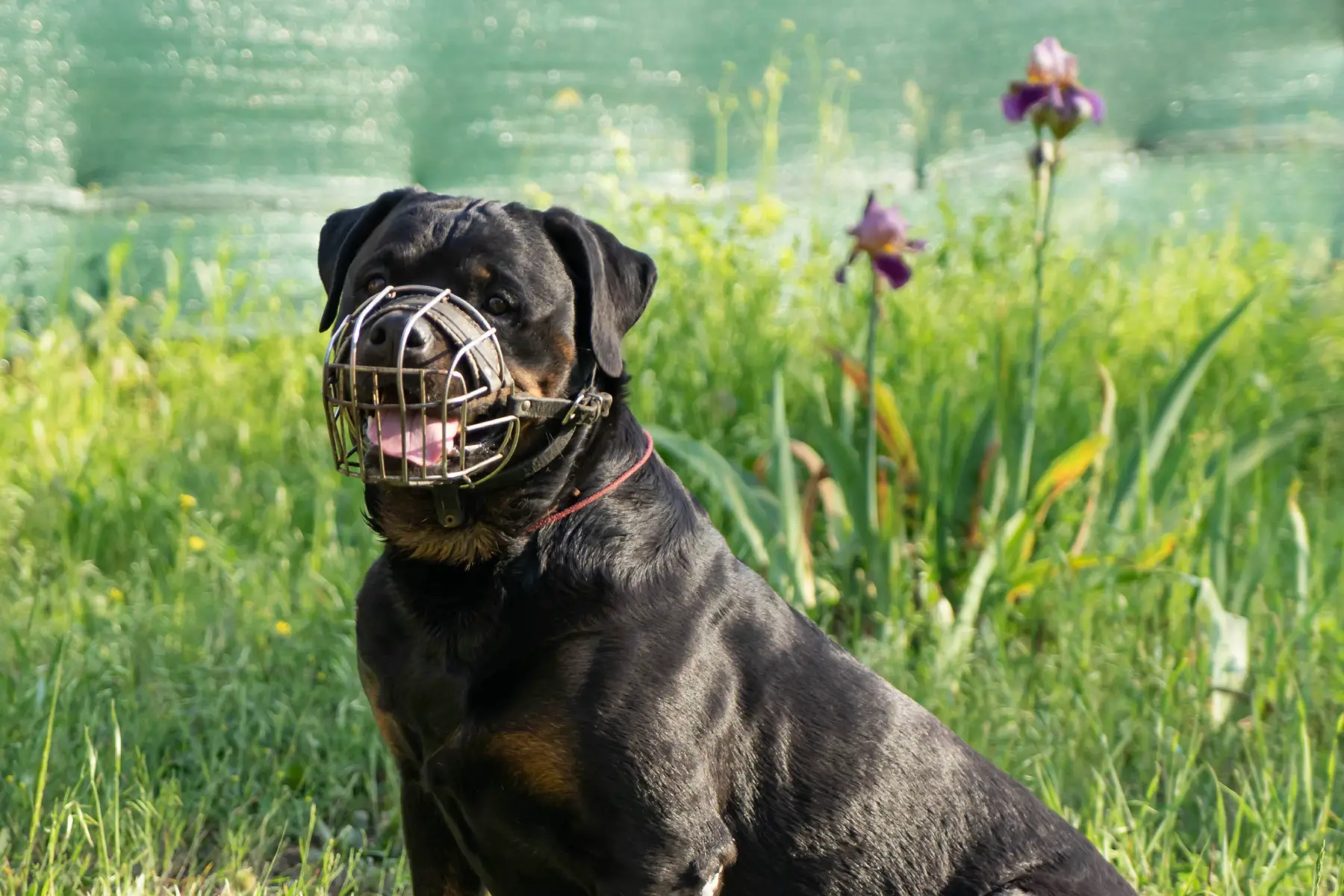
In addition to this, there are calls for the government to set up a central register to record dog bite incidents. There is also a plea for a hotline to report dangerous dogs or owners who refuse to deal with them properly. Notably, the National Pet Information Centre (LICG) provides information on dog bite incidents. This includes what to do if it happens to you and how to prevent them.
Conveniently, if you are considering getting a dog, the National Pet Information Centre (LICG) provides some helpful guidelines on how to choose the right breed for your situation.
New bans on harmful characteristics
In addition to the list of high-risk dog breeds, the government is working on introducing two bans on animals with harmful external characteristics; namely dogs with short snouts and cats with folding ears. This will prevent owners from keeping, trading, or importing animals that fall into these categories.
Pet laws in the Netherlands
If you are looking to bring a pet into your home in the Netherlands, it is important to be aware of the laws in the country. Naturally, these will depend on the type of animal you wish to get. Below are some of the key laws to be aware of.
Registering and microchipping
As of 2013, all dogs that are born in the Netherlands must be microchipped within seven weeks of birth and registered in a national database within eight weeks of birth.
There are several registration portals to choose from, and when you enter your pet’s information, it goes directly into a national database. Therefore, you are free to choose whichever portal you like. That said, the registration fee can differ, which may determine your choice:
- BackHomeclub
- ChipBase
- Databank Honden
- Dierplatform
- Hondregistreren
- Huisdier-registratie
- PetBase
- Petlook
- Stichting Nederlandse Databank Gezelschapsdieren (NDG)
A veterinarian places the microchip, which is no larger than a grain of rice, underneath the skin of the animal. This contains information such as the pet’s name, address, and emergency contact number. The vet will then register the microchip number in a designated portal. Once the animal is chipped and registered, you will receive a small metal tag to place on its collar.
This information can be used to identify the animal and reunite it with its owner, should it get lost or stolen. Therefore, it is important to ensure that these details are up to date.
Notably, all domestic cats will also have to be microchipped and registered in the Netherlands under new plans being drawn up by the government in 2023. The move aims to reunite lost cats with their owners more quickly. It also strives to help tackle the problem of feral cats across the country.
Vaccinations
Similar to the rules surrounding registering and microchipping pets in the Netherlands, there are also some mandatory vaccinations for cats and dogs living in the country, as follows.
Dogs must be vaccinated against:
- Parvo (Parvovirus infection)
- Distemper (Carré’s disease)
- Infectious Liver Disease (Hepatitis Contagiosia Canis – HCC)
Dogs must be vaccinated against Parvo and Distemper within seven weeks of birth and at least seven days before they are sold. They must also be vaccinated against these viruses within five working days of their arrival in the country.
Cats must be vaccinated against:
- Feline distemper (Panleucopenia virus)
- Cat flu (Feline herpes and calicivirus)
Similar to dogs, you must vaccinate cats against these diseases within seven weeks of birth or within five working days of their arrival in the country.
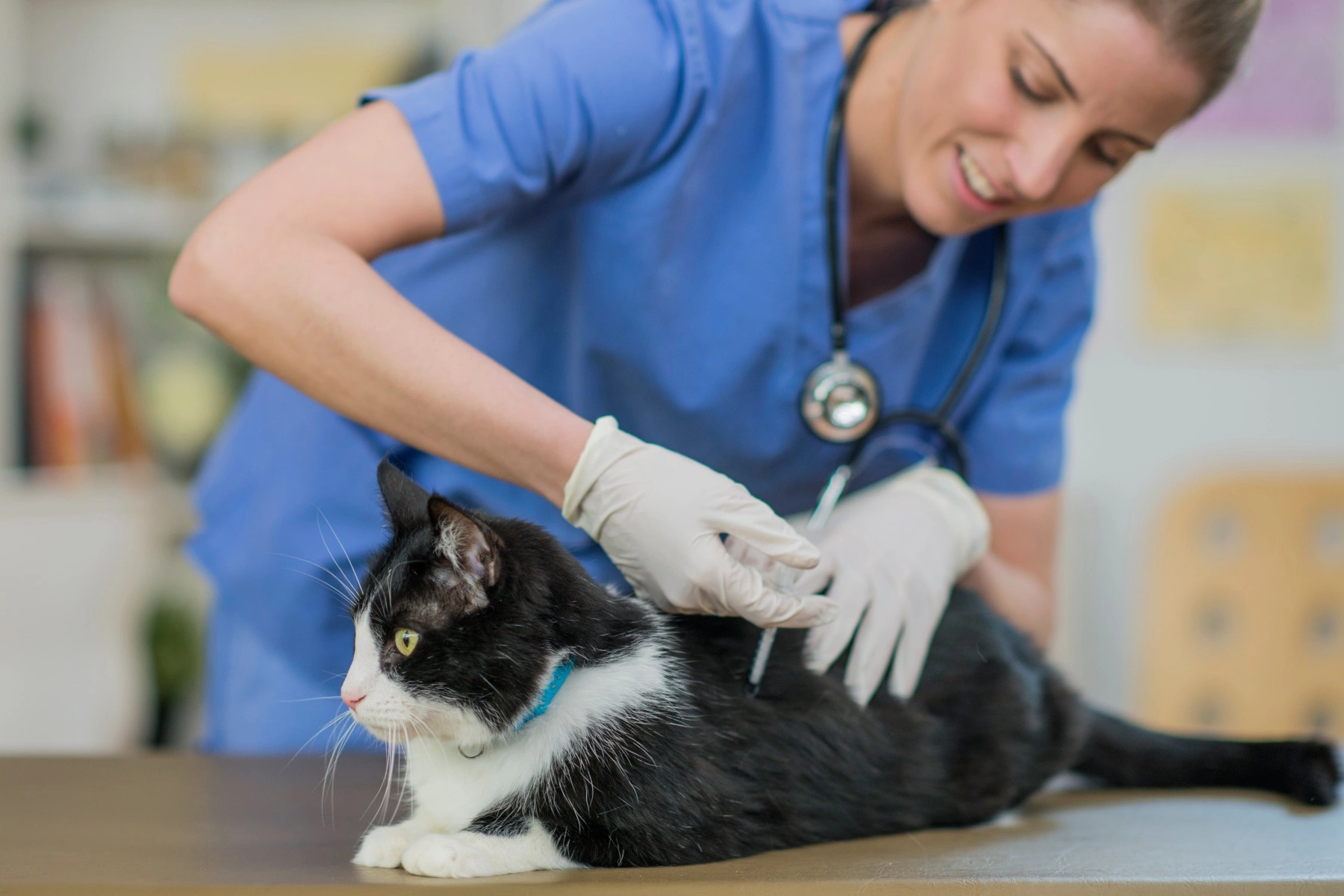
Notably, if you want to bring a dog, cat, or ferret into the Netherlands, you must also have it vaccinated against rabies at 12 weeks old. However, it must wait 21 days after the vaccination before entering the country. You can read more about that further down the article.
Of course, pet owners are responsible for keeping vaccinations up to date and providing the related booster doses when necessary.
Spaying and neutering
There is no obligation to spay or neuter cats or dogs in the Netherlands and this is down to the discretion of the owner. That said, many veterinarians recommend neutering male cats after six months of age to reduce the chances of unwanted urinating behavior and unpleasant-smelling urine. Of course, it can also help prevent unwanted litters. Similarly, you can spay female cats between the ages of six and eight months to diminish the chance of unwanted litters. This can also help to reduce the risk of mammary gland tumors and uterus problems later on in life.
Although neutering a male dog is not mandatory, there are several reasons for doing it. This includes ensuring that the dog is no longer fertile and that it has no medical problems or behavioral issues. Generally speaking, you can safely neuter male dogs from the age of six months and spay female dogs prior to their first heat. This usually occurs when they are around five to six months old.
The cost to spay or neuter your pet will depend on several factors. This includes the species of the animal as well as its size and weight. Of course, you can ask your vet about the costs when you discuss your pet’s specific needs and situation.
Designated dog walking areas
Dutch law allows dogs to walk in public spaces. However, they can only go off-leash in designated areas or at certain times. For instance, dogs can enjoy walking on Zandvoort Beach all day between 1 October and 15 April, but not between 09:00 and 19:00 from 15 April to 1 October. However, they can roam freely (off-leash) any time of the day or night, on the beach past Parnassia in Bloemendaal aan Zee.

Given these specific rules, it is important to look out for signs when you are out walking your dog. You can also check your municipality website to find out where your dog is free to walk without a leash and where it can relieve itself. Just be aware that you may receive a hefty fine if you allow your pooch to do its business in an undesignated area.
Speaking of cleaning up, you must carry poop bags with you at all times so that you can pick up your dog’s mess and dispose of it in a marked bin. These are usually green with a dog sign on them.
Notably, the Netherlands banned shock collars in 2020, and those who use them could face a fine of up to €20,000, or even three years in prison.
Annual dog tax
Depending on where you live in the Netherlands, you may have to pay an annual dog tax (hondenbelasting) at your local tax office (Belastingdienst).
Although many municipalities have already scrapped this, around 40% still impose it. The amount can vary by location but tends to range from between €60 and 150 per year. The municipalities with the highest dog tax are The Hague (€137.28) and Hendrik-Ido-Ambacht (€134.76). Meanwhile, the lowest are Utrechtse Heuvelrug (€98.56) and Den Bosch (€94.20). You can check your municipality website for more information on this.
It is worth noting that you may have to pay extra charges for each additional dog that you welcome into your home.
Adopting pets in the Netherlands
Adopting a pet is a big responsibility and there are several important things to consider before making this decision. For example, if you are renting, does your landlord allow pets in the building and do you have enough space in your home for them to run around?
Of course, you also need to make sure that you can afford expenses such as food, supplies, insurance, and any medical costs. Then, you need to factor in time to spend with your pet, such as walking your dog several times a day or arranging a carer to look after them when you go away on vacation.
Where to adopt a pet
If you have carefully considered all of the above and feel that you are able to meet the requirements for keeping a pet in the Netherlands, your next step is to get in touch with a local pet adoption agency or an animal shelter (dierenasiel) and see what animals are available for adoption.
Just bear in mind that the types of animals in the shelters may vary and it may take some time before you find what you are looking for. That said, you can generally expect to discover dogs, cats, rabbits, rodents, and birds that need a loving new home. You can check the websites and social media accounts of the shelters to see what pets are available.
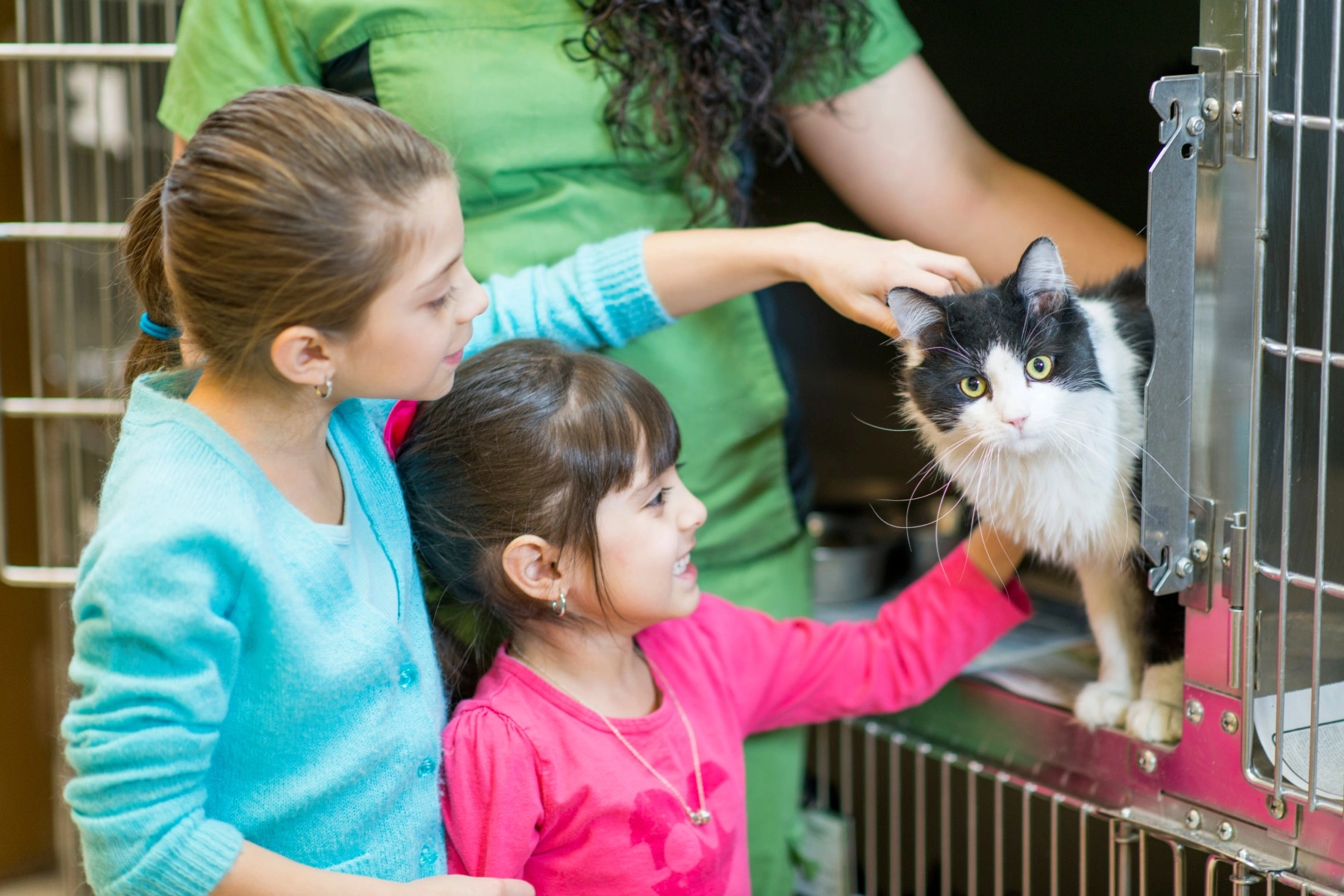
Notably, because the Netherlands is officially the first country in the world without stray dogs, many of the canines in these shelters actually come from countries such as Romania, Spain, or Greece.
The adoption process
The adoption process can differ from shelter to shelter. However, most will have a selection procedure and will require you to fill in an application form with details about your housing situation and income, and whether you have any children or other pets. This allows the shelter to make a suitable match and ensure that the animal you end up rehoming does not end up back there. Notably, some organizations will invite you to visit the animal several times or bring it to your home, before you commit to adopting it.
You can find some of the largest animal shelters in the Netherlands here and search for them by city or postcode.
Buying pets in the Netherlands
You must be at least 16 years old to buy a pet in the Netherlands. By law, sellers may not display animals for sale in shop windows and must provide the buyer with written information about their health.
Local pet stores across the country tend to sell smaller animals such as birds, aquarium fish, and hamsters. Dogs and cats, on the other hand, are generally available for sale through breeders. However, wherever you buy your pet, it is important to make sure that the retailer or breeder is reputable and certified. They should also provide you with mandatory documents such as a health certificate and medical background.
The cost of a dog can vary significantly, depending on its breed and the place of purchase. That said, according to the non-profit organization LICG, prices can range from €215 to €1,400. A cat, on the other hand, can cost anywhere from €100 (from a shelter) to around €1,000 (for an official pedigree).
Bringing or importing pets into the Netherlands
The Netherlands has very specific rules when it comes to bringing animals into the country, and these vary depending on where you are coming from. Notably, because the country has taken great measures to eradicate the rabies virus, it has strict rules regarding this. Therefore, it is important to check the criteria well in advance of importing any pets into the country.
Below is an overview of the main rules for importing animals into the Netherlands.
From another EU country
If you want to bring a dog, cat, or ferret into the Netherlands from another EU country, it must meet the following criteria:
- Be at least 15 weeks old
- Be vaccinated against rabies at 12 weeks old and must wait 21 days before entering the Netherlands
- Be microchipped and have a pet passport
You can find more detailed information about the requirements here.
It is also important to be aware that dogs traveling from Malta, Finland, and Ireland must also be treated for fox tapeworm prior to departure.
Notably, aside from meeting the criteria listed above, all dogs entering the Netherlands from other EU member states must have a microchip and a local vet must register them within two weeks of their arrival in the country. On the other hand, if you are bringing your dog on holiday with you to the Netherlands for less than three months, you don’t need to have it registered and microchipped.

If you want to bring a small rodent, rabbit, bird, fish, amphibian, or reptile into the country from another EU member state, it must have a pet health certificate signed by a veterinarian. And if the animal you wish to import is a protected species, you must check that you are allowed to bring it into the country under the Convention on International Trade in Endangered Species of Wild Fauna and Flora (CITES).
From a non-EU country
As you might expect, the criteria for importing a cat or dog from outside the EU are much more complicated. However, the first thing you will need to do is check whether you are coming from a low- or high-risk country for rabies, as this will determine the requirements.
You can find a list of low-risk rabies countries in Annex II of this document. Conversely, countries not listed here are high-risk rabies countries.
From a low-risk country
If you are traveling from a low-risk country, the animal must meet the following criteria:
- Be microchipped; the chip must be applied before or on the same day as the rabies vaccination and the date and microchip number must be stated on the certificate or EU pet passport
- Must be vaccinated against rabies 21 days prior to entry into the EU; this must be stated on the certificate or EU pet passport
- Have a veterinary certificate; this is valid for 10 days from the date of issue by the official veterinarian in the third country until the date of the check at arrival by customs
- Carry all the relevant documents; including a veterinary certificate, EU passport, and owners declaration form (in English)
- Additional requirements apply to Australia and Malaysia (read more here)
Notably, if you are importing a dog from a country outside the EU, you must also obtain an EU pet passport for it after you have arrived in the Netherlands.
From a high-risk country
If you are traveling from a high-risk country for rabies, the animal must meet all of the criteria listed above, but must also have a blood sample taken at least 30 days after the rabies vaccination to establish the number of rabies antibodies. Your vet must send the sample to an EU-approved laboratory and you must wait at least three calendar months from the date the sample was taken before you travel.
You can find more detailed information about all the entry requirements listed above on the Dutch government website. You can also find more general information about bringing pets to the Netherlands from abroad on the Netherlands Food and Consumer Product Safety Authority (NVWA) website.
Traveling to the Netherlands with pets
There are several ways to travel to the Netherlands with pets, and the method of transport you choose will largely depend on your location. For instance, if you are coming from a neighboring EU country, you might want to consider driving. Below is an overview of some other options.
By train
If you don’t wish to drive to the Netherlands, you might want to consider getting a train. However, it is important to be aware that different rules apply to different train companies.
For example, with the exception of assistance and guide dogs, pets are not allowed to travel on the Eurostar. However, small dogs and other pets may travel for free on Eurostar’s services between Belgium, France, Germany, and the Netherlands, as long as they are carried in a basket or bag no larger than 55x30x30cm and weigh less than 6kg.
Large dogs, on the other hand, can travel in the carriage for €30 (one-way trip) as long as they are kept on your lap or on a leash and wear a muzzle. Similar rules apply to the French high-speed train, TGV.
Dogs are also permitted onboard ICE International trains from Denmark, Belgium, France, Switzerland, and Austria. However, they are not allowed to enter the bistro carriage. Larger dogs must also be kept on a leash, wear a muzzle, and require a ticket. Meanwhile, small dogs and pets that can be carried in a basket or cage – as well as guide dogs – can travel for free.
You can read more about the different train company rules for bringing pets on board here.
By plane
If you live further afield and wish to fly to the Netherlands with your little companion, there are several pet-friendly airlines that welcome them onboard.
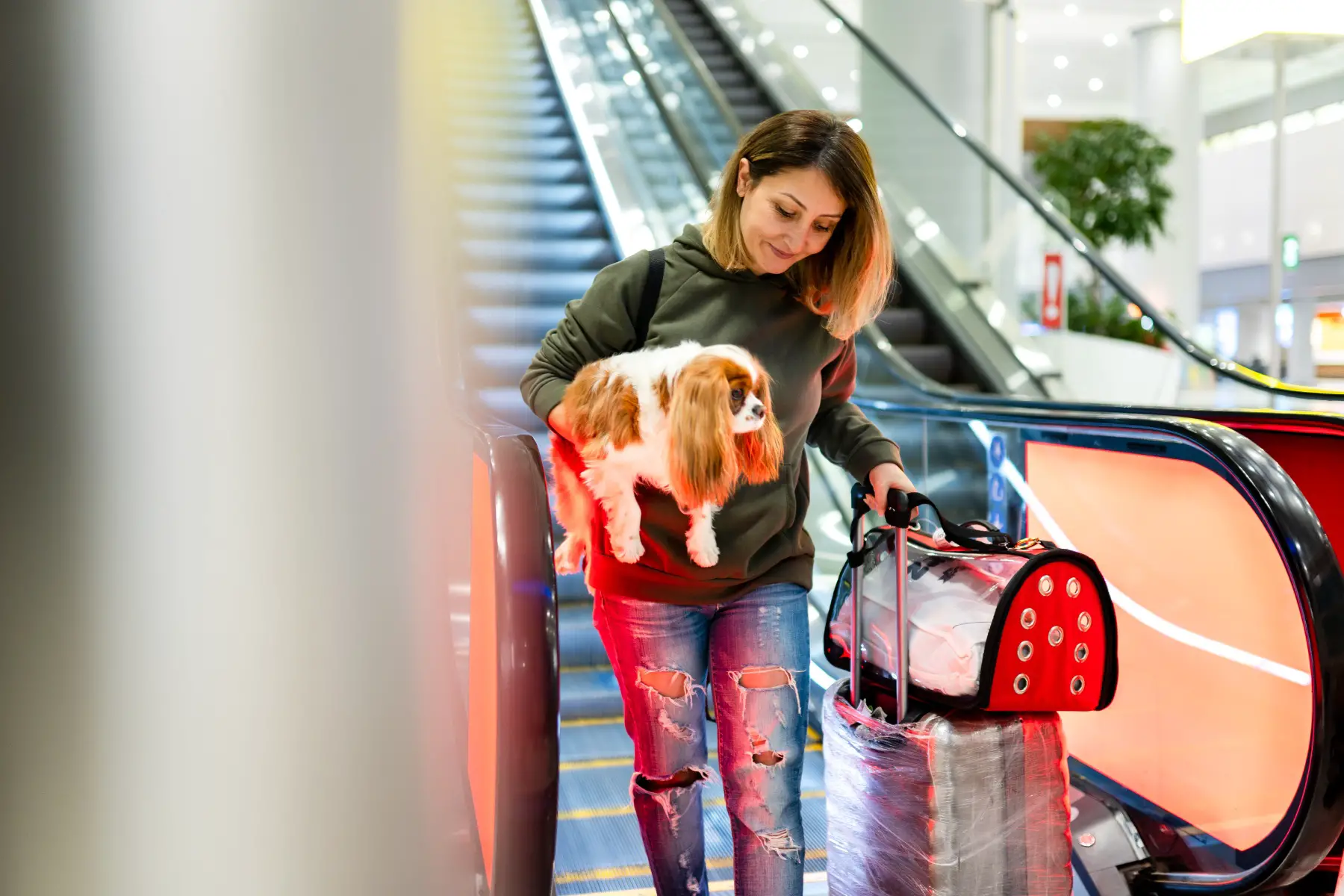
That said, every airline has its own specific rules when it comes to traveling with pets. Therefore, you will need to check the individual websites. Notably, the dimensions and weight of your pet will determine whether it can travel with you in the airplane cabin or below deck in the cargo hold.
The airlines that allow you to fly to and from the Netherlands with pets include:
- Air France
- Aer Lingus
- American Airlines
- KLM
- Lufthansa Airlines
- Swiss International Airlines
- Turkish Airlines
By ferry
It is possible to travel by ferry with a pet from England to the Netherlands and many ferry companies provide pet-friendly cabins to make the journey more comfortable for you both.
For instance, you can bring your dog, cat, or other pet onboard the Newcastle to Amsterdam passenger ferry route with DFDS. Stena Line also offers this option on its Harwich to Hook of Holland route. Meanwhile, P&O Ferries allows passengers to travel from Hull to Rotterdam with dogs, cats, or ferrets as long as they meet all the EU entry requirements and have a valid pet passport. If you are traveling from Norway to the Netherlands, Holland Norway Lines also allows pets to travel in its pet-friendly cabins.
However, once again, you will need to check the specific requirements with the individual ferry companies before booking your crossing as these can differ.
On the other hand, if you prefer to leave the task of relocating your pet to the professionals, there are several pet relocation companies you might want to consider. This can help take the stress out of your move and allow you to focus on other tasks at hand. You can read more about how to move your furry friend abroad here.
Arriving with pets in the Netherlands
Upon arrival at an airport or ferry terminal in the Netherlands, you must report your pet to Customs (goods declaration). They will then verify your pet’s microchip, as well as the accompanying health certificate and other documents. Notably, you should contact the airline you are traveling with directly to discuss the logistics of traveling with your pet.
Fortunately, if your pet meets the EU import requirements, it does not need to be quarantined. However, if it does not, then Customs will hand it over to an official veterinarian of the NVWA. They will check your pet, and the available documentation, and make a decision about what to do with it.
The vet could either decide to quarantine the animal or send it back to its country of origin. It is important to be aware that if your pet does need to be placed in quarantine, you (as the owner) will be charged with all the costs. This includes housing, transportation fees, and vet expenses.
Needless to say, it is best to avoid the risk of quarantine by making sure that you start the necessary preparations months before your trip.
Pet healthcare in the Netherlands
Fortunately, the Netherlands has a well-structured healthcare system for pets. This includes the provision of urgent care as well as regular check-ups. You will find a solid network of veterinary practices (dierenarts) and animal hospitals (dierenartspraktijk) throughout the country, and you can easily search for ones in your area by using a directory such as Doggo.
Emergency services
If your pet needs urgent care outside of the operating hours of your local veterinary practice, you can either contact an emergency vet clinic (Dieren Spoedkliniek) or your local animal ambulance (dierenambulance) to seek assistance. An operator will immediately forward your request to a team of rescuers in your neighborhood who can help.
Pet insurance
Once you and your pet are settled into your new life in the Netherlands, it is advisable to arrange pet insurance for them. While this is not mandatory, it can be very beneficial when it comes to paying vet bills which can quickly add up in the case of injury or illness.

There are several pet insurance providers in the Netherlands which offer a range of policies to suit your pet’s individual needs. Naturally, the cost of the premium will depend on several factors such as the type of pet you have, its age, and the level of coverage you want. Therefore, it is best to contact each individual provider to ask for a quote.
Some of the main pet insurance providers in the Netherlands include:
Notably, when considering what level of insurance to purchase, it is important to read the policy wording very carefully so that you have a clear understanding of what it covers. Moreover, if you know that your pet is prone to a certain condition, it is best to check that the policy covers this. Of course, you will also want to check that the insurance provider is established and reputable which is where reading reviews and asking around in local expat groups can help.
Puppy training in the Netherlands
The practice of puppy training has become increasingly popular in the Netherlands in recent years. It was initially introduced for safety reasons to reduce the number of dog attacks and socialize canines under professional supervision. However, many dog owners now turn to reputable trainers to help with basic skills such as potty training, simple commands, and walking safely on a lead.
Many veterinarians and animal behaviorists recommend that healthy puppies can begin socialization classes as early as seven or eight weeks. There are numerous dog schools throughout the Netherlands that offer a variety of training courses and other services. Notably, some provide boarding and training, while others offer to come to your home to conduct the sessions. You also have the option of private or group lessons which can determine the price. Naturally, the cost of the course will also vary depending on the length of the sessions and how many are included.
You can search for dog schools by province on Doggo.
Pet shops in the Netherlands
Given the popularity of pets in the Netherlands, you shouldn’t have any trouble finding at least one pet shop in your local town or village. What’s more, many of them allow you to bring your dog with you when you go shopping for food, toys, and accessories for your little companion. That said, it is always best to ask a shop assistant first – or check for any no-dog signs in the window – before entering.
Many supermarkets and garden centers across the country also sell a range of pet food and supplies, with the larger branches offering a wider selection. You will also find many independent pet stores, as well as online stores that sell a variety of goods.
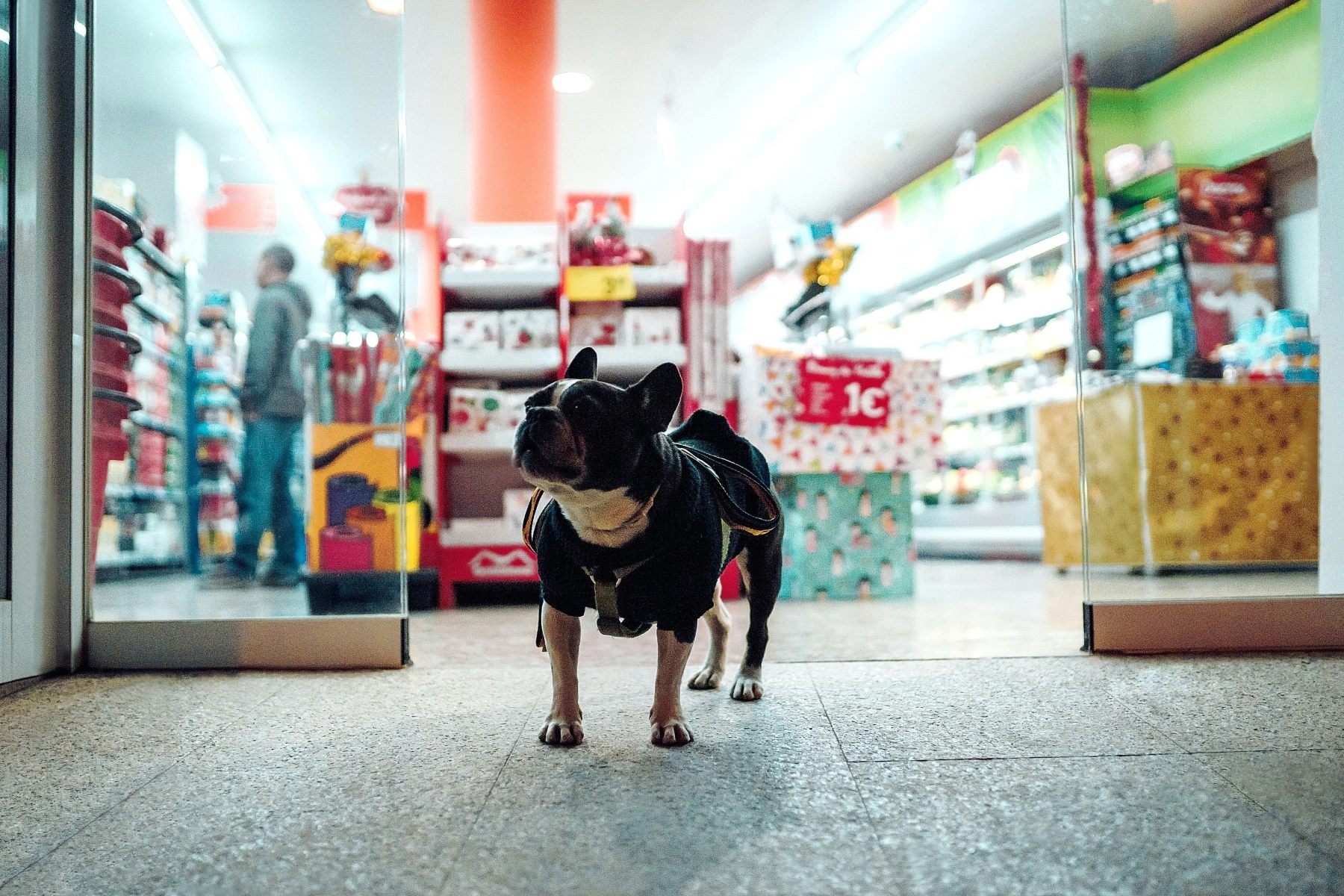
The biggest pet store in the Netherlands is Avonturia De Vogelkelder which is located in The Hague. Meanwhile, some of the biggest pet retail chains include:
It is worth noting that there are no separate pharmacies for pets in the Netherlands, and primary vets are responsible for prescribing medication for them across the country.
Losing and finding a pet
If your pet has gone astray or you have found one wandering without its owner, you can contact the Netherlands’ official animal tracing service, Amived, at 090 0264 8334, or visit its website to report it. They will then cross-reference the animal’s data with local shelters, veterinary practices, and protection agencies to reunite it with its owner.
However, if no record is found, the next step is to contact nearby animal shelters and your local animal ambulance (dierenambulance). These ambulances help to retrieve lost pets and transport injured ones to animal hospitals. You can find a directory of animal ambulances here.
If your lost pet has an electronic identification chip, you can also report it to the national microchip database. Alternatively, you can ask your neighbors to keep an eye out for it and put up missing posters around your neighborhood. You could also post photos of your pet on local social media groups.
Selling a pet in the Netherlands
There are some important criteria to meet if you want to sell a pet in the Netherlands. For instance, you must be at least 16 years old and must provide essential documentation regarding the animal’s state of health. Moreover, you cannot display animals in shop windows.
You can find more information about selling animals in the Netherlands on the Dutch government website.
Useful resources
- Government.nl – the Dutch government website which outlines the rules for keeping pets in the Netherlands
- Rijksdienst voor Ondernemend Nederland (RVO) – provides information about the different portals for registering a dog in the Netherlands
- Netherlands Food and Consumer Product Safety Authority (NVWA) – a government website that provides general information about bringing pets into the Netherlands



